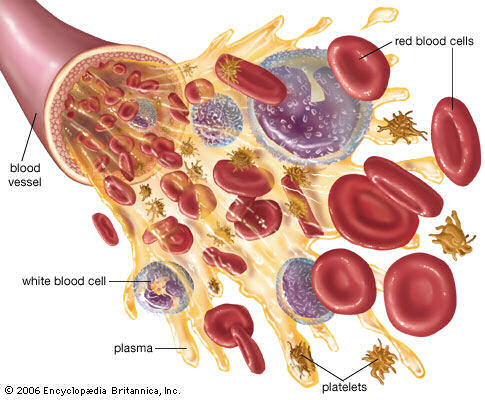175.WHY IS OUR BLOOD RED?
The blood which flows through the arteries, capillaries, and veins of your body contains many different materials and cells. Each part of the blood has its own special work and importance.
There is, first of all, the liquid part of the blood. This is called the plasma, and makes up a little more than half the blood. It is light yellow and a little thicker than water because many substances are dissolved in it.
What are some of these substances?—Proteins, antibodies that fight disease, fibrinogen that helps the blood to clot, carbohydrates, fats, salts, and so on, in addition to the blood cells.
The red cells (also called red blood corpuscles) give the blood its color. There are so many of them in the blood that it all looks red. There are about 35 billion of these tiny, round, flat discs moving around in your body all at once! And they stay in the blood vessels at all times.
As the young red cell grows and takes on adult form in the marrow, it loses its nucleus and builds up more and more hemoglobin. Hemoglobin is the red pigment, or color. It contains iron combined with protein.
As the blood passes through the lungs, oxygen joins the hemoglobin of the red cells. The red cells carry the oxygen through the arteries and capillaries to all cells of the body. Carbon dioxide from the body cells is returned to the lungs through the veins in the same way, combined mainly with hemoglobin.
Red cells live only about four months and then are broken up, mostly in the spleen. New red cells are always being formed to replace the cells that are worn out and destroyed.
In addition to the red blood cells, there are also several kinds of white blood cells.



Leave a Reply